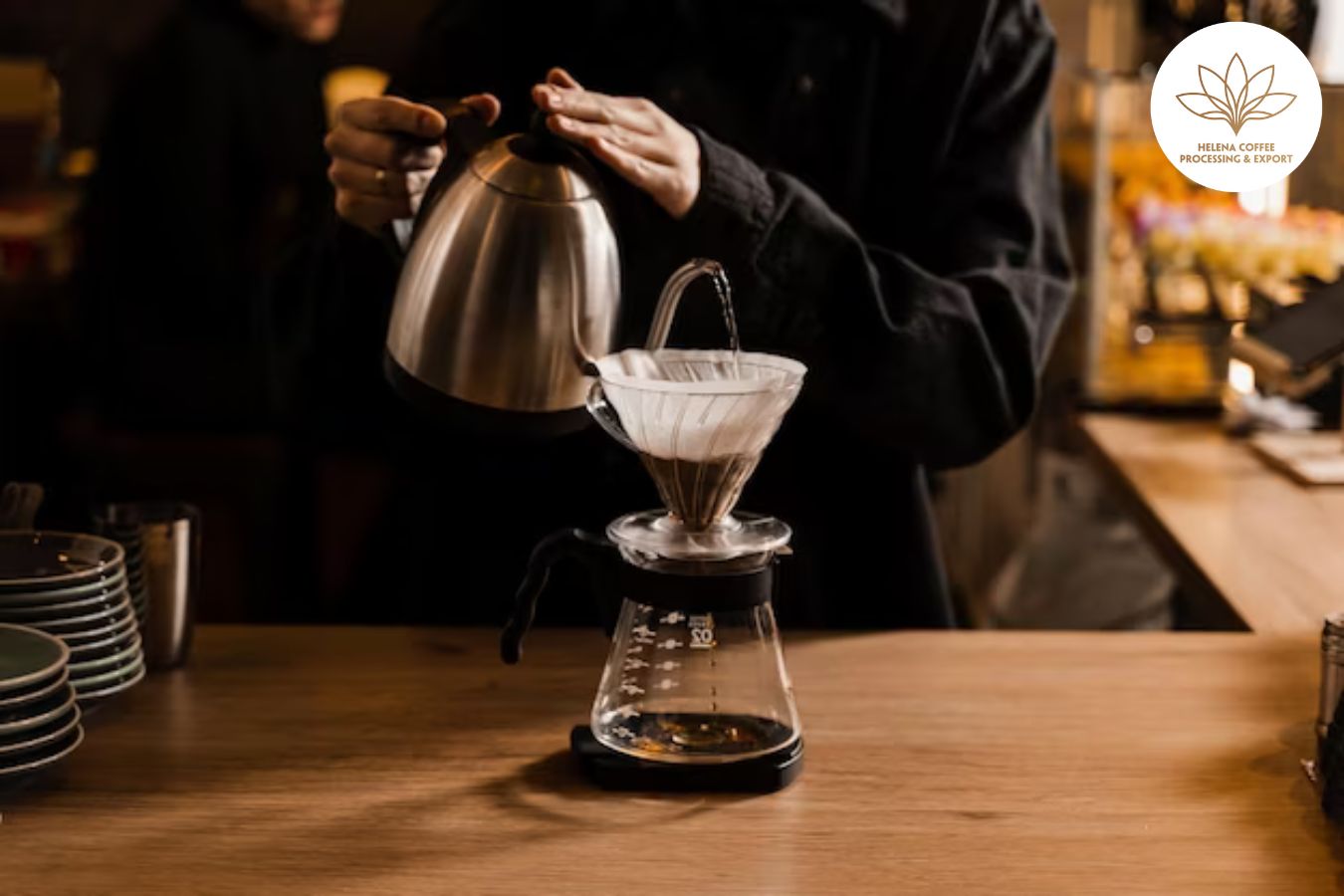What Is The Future Of Filtered Coffee
02/04/245
Địa chỉ: Yên Bái
Thông tin thêm

Coffee Daily NewsThe future of filtered coffee: Innovation is present in all areas of specialty coffee. Many market characteristics are constantly changing and evolving, and both industry professionals and consumers need to keep up with them. This includes filtered brewing methods . In recent years, we’ve seen some major changes in the way coffee shops and tournament participants prepare pour overs, for the most part, with an overarching focus on controlling as many extraction variables as possible.
A brief history of filtered coffee
All over the world, filtered coffee is quite popular. In some countries and regions, filter coffee consumption dates back centuries:
- In Latin American countries like Costa Rica, many people still use traditional wooden drippers and cloth filters (or bolsitas);
- Touba coffee ( or Sufi coffee), which is prepared in a similar way to filtered, is common in Senegal and other West African countries.
One of the precursors in the evolution of filtered coffee preparation, however, was the launch of the Melitta brand in the early 1900s. After Melitta Bentz created a brewing method using a brass pot and a filter, the Melitta brand became a one of the first to sell paper filters. And this revolutionized the way of filtering coffee.
After that, many other companies started designing different ways of preparing coffee. In 1941, German scientist Peter Schlumbohm invented the iconic Chemex . This coffee maker was known as “one of the best designed products of modern times” by the Illinois Institute of Technology.
In 2004, Japanese company Hario designed its revolutionary V60 filter holder . It quickly became more popular in specialty coffee after the 2010 World Brewers Cup. The flat-bottomed Kalita Wave, in turn, was officially launched in 2010 by Japanese brand Kalita Co. And this also helped raise the bar even further. of infusion methods.
How has the preparation of filtered coffee changed?
Over the past decade, the number of manual coffee brewing accessories available on the market has only continued to grow. Although the V60 still remains one of the most popular methods, there are now several accessories for extracting filtered coffee, such as Origami, GINA, Graycano and Orea.
Given the increasing diversity of accessories, preparation techniques are also changing. One of the most notable developments has been a much greater emphasis on precision and controlling as many extraction variables as possible. Effectively, specialty coffee has become more “scientific” about brewing filtered coffee ( and espresso ), which has helped deepen our understanding of how certain brewing variables affect extraction.
Erik, who also works part-time as a barista and is an avid coffee drinker at home, explains how people have become more willing to experiment with different variables. “We now know more about how many different variables affect flavor extraction, so we feel more comfortable playing with them,” he says.
The influence of experimental processing methods
Since the early 2000s, specialty coffee has developed a clear preference for single-origin coffees – which has also influenced filtration methods. In more recent years, however, the growing popularity of experimental processing methods is also changing the rules of the game.
Dušan roasts coffee for A GOAT STORY, which makes the GINA accessory. This accessory – made famous by 20 World Brewers Cup champion Emi Fukahori – uses three different extraction methods (including full immersion, pour-over and cold drip) by turning a valve located at the bottom.
- Mã tin: 33686135
Tăng lượt xem cho tin
* Giá chỉ từ 15.000đ
Hướng dẫn giao dịch an toàn
- Không thanh toán tiền trước khi nhận hàng
- Kiểm tra hàng cẩn thận trước khi mua
- Giao dịch ở nơi công cộng
